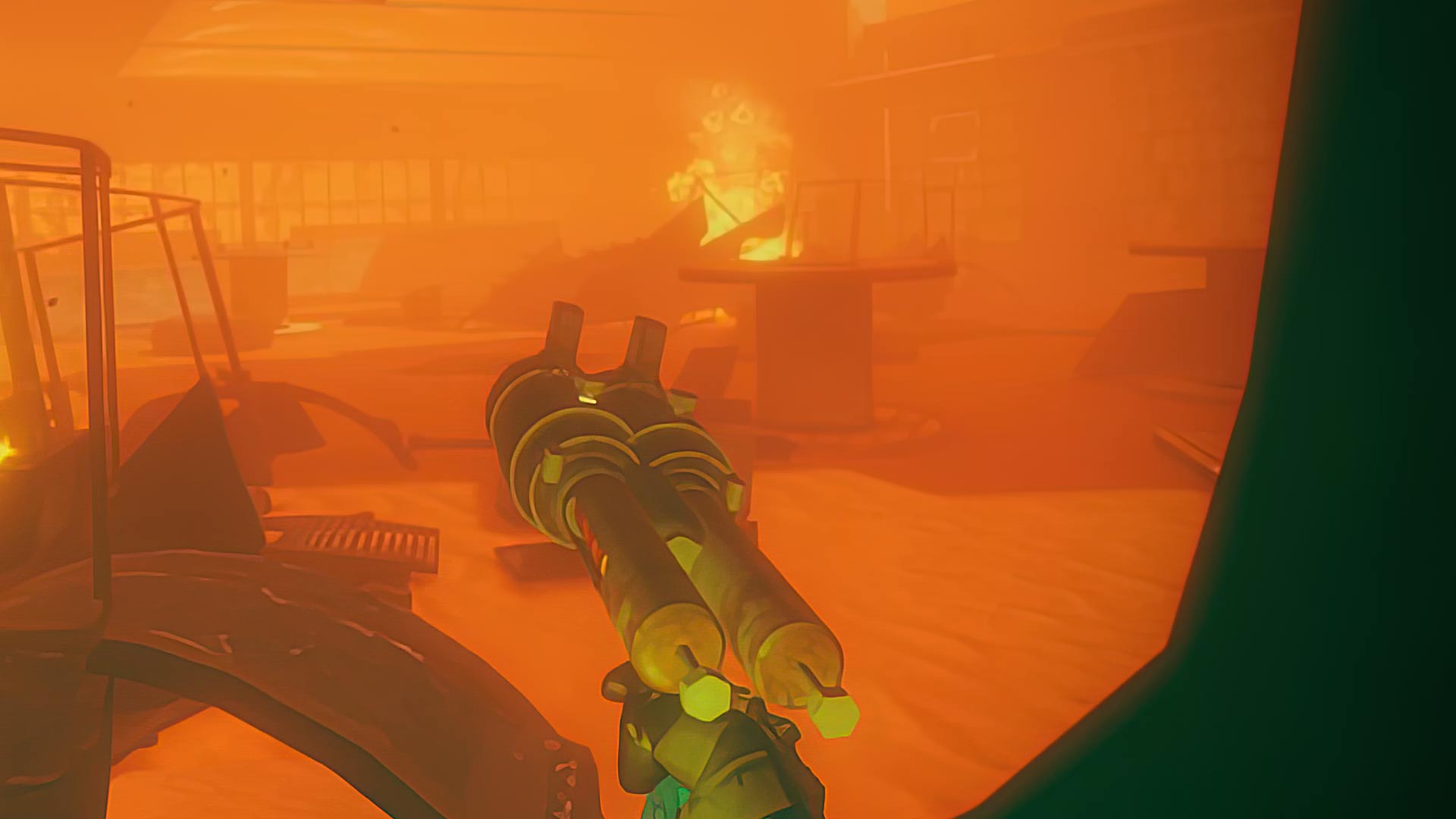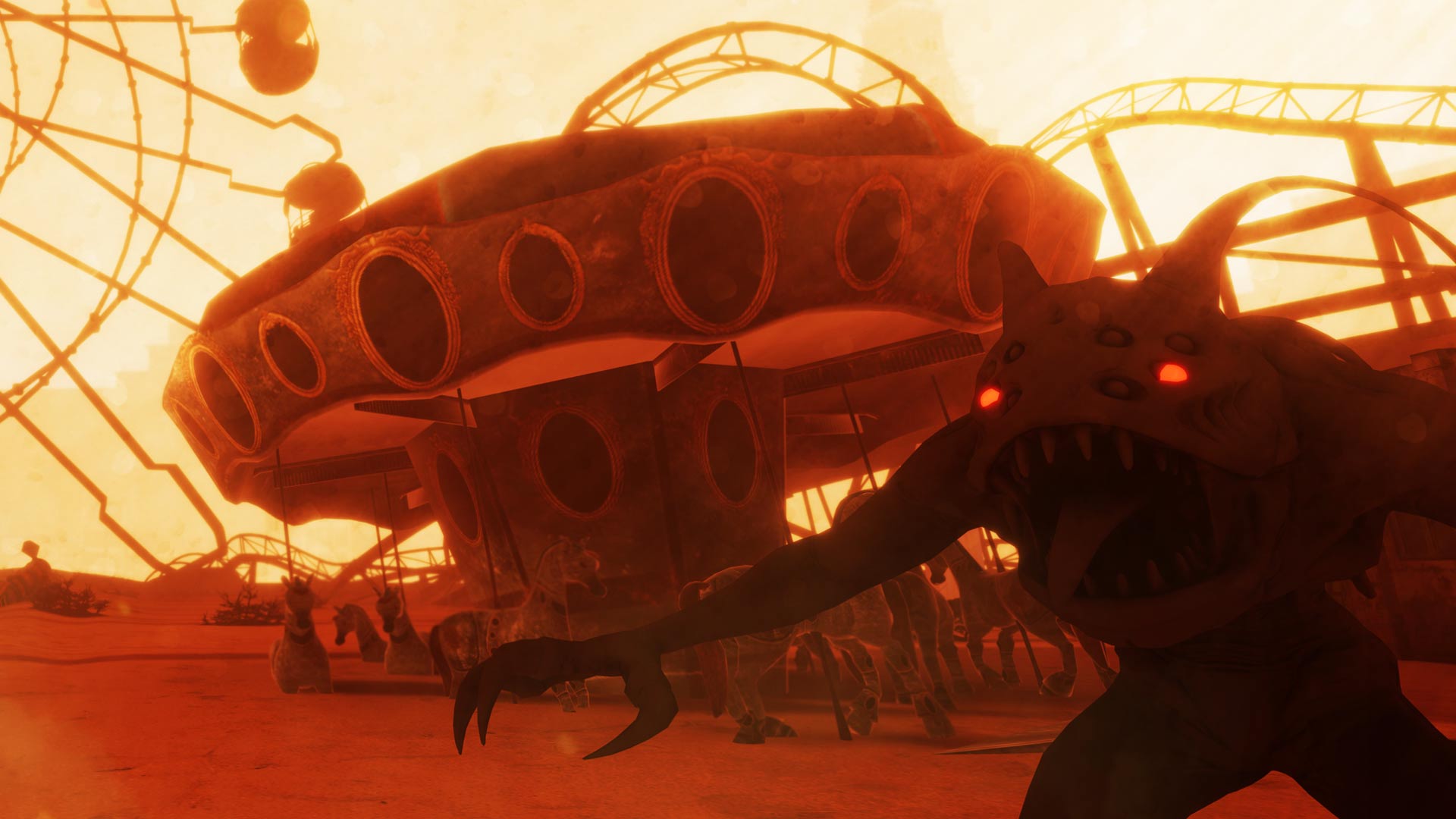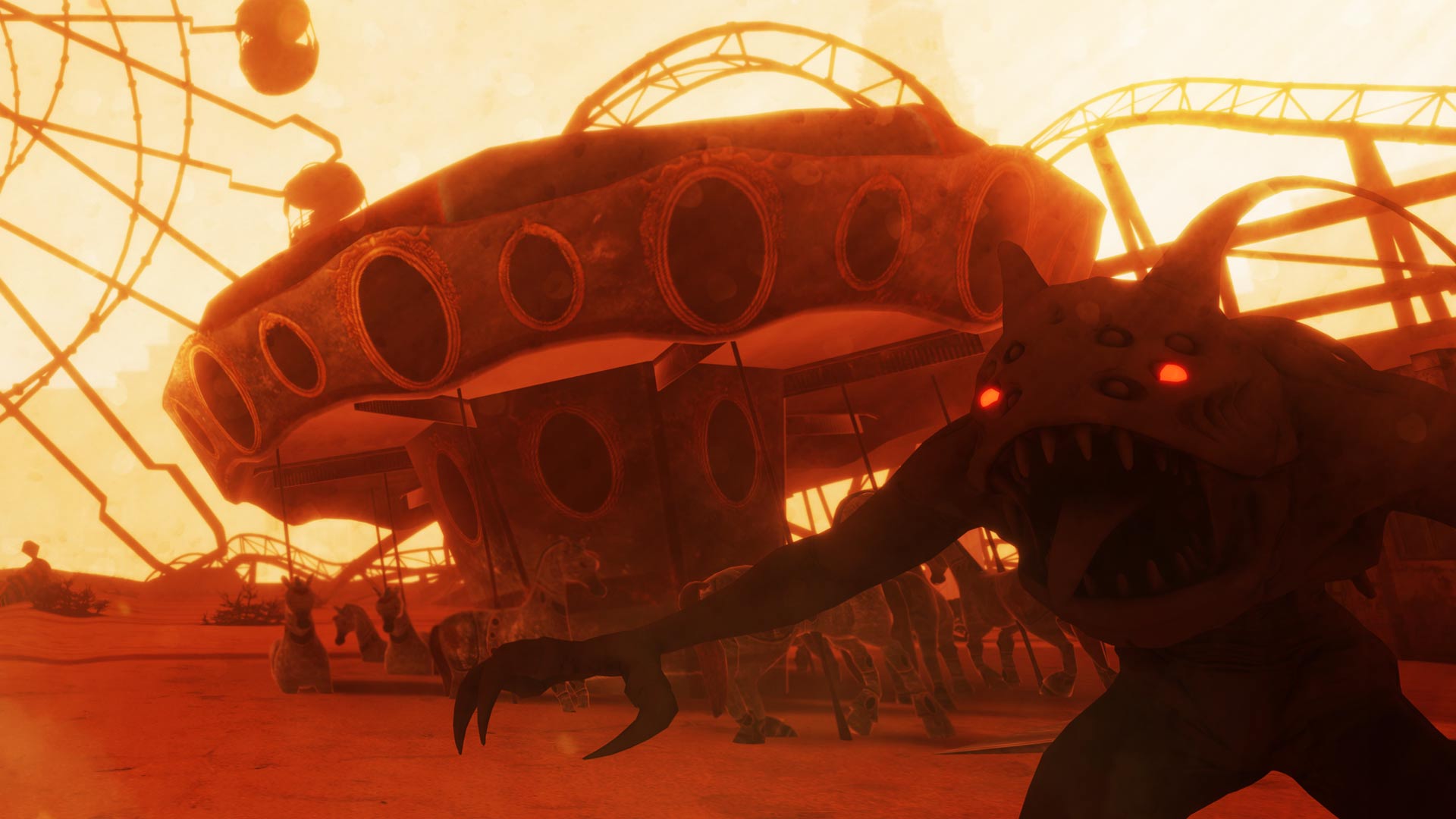The Twilight Zone is an anthology franchise that’s spawned multiple TV shows throughout the decades following the iconic 1959 series. While the VR game stays mostly true to its roots, tossing out sci-fi horror themes and narrative twists aplenty, its inclusion of a finicky shooter-based combat system pitted against paper-thin enemies is a sore spot that unfortunately cheapens the overall experience.
The Twilight Zone Details:
Available On: Quest 2, PSVR coming soon
Release Date: July 14th, 2023
Price: $20
Developer: Pocket Money Games
Publisher: Fun Train
Reviewed On: Quest 2
Gameplay
Like the series from the ’60s, the game’s anthology setup feels appropriately pulpy, and provides a buffet of narrative twists you’d expect from the franchise. The storytelling aspect of the game is definitely its strong suit, as it weaves three different tales that feel like they were ripped from show’s glory days, with a serviceable Rod Serling impression included.
Each story takes around 45 minutes to complete, but for the sake of spoilers I’m not going much further than that. There’s suitably weird themes that touch on technology, gaming culture, the survival of the species in a hot and arid hellscape—all of it really on point for 2023.

While the stories are definitely on brand with its psychological horror and patented sci-fi bend, the game includes an action shooter theme that would feel out of place in any episode of The Twilight Zone I’ve ever seen. A large portion of the game is focused on combat, and in two of the episodes you’re given some sort of gun and expected to kill a ton of enemies.
And despite some truly intriguing twists, combat weighs down everything, as the shooting experience left a lot to desire. Aiming is difficult with iron sights on one gun from the third episode, and all other guns in the second episode didn’t include sights at all, which all leads to inconsistent results across the board. Enemy reactions to shots are also equally ineffectual, which always leaves you guessing if you hit the target or not.

Enemies also spawn out of nowhere and poof away when they’re dead. If you’re attacked, you restart at your last automatic save. There are a few high notes, such as some cartoony one-time use guns that can be fun, and some environmental puzzles that may take a minute or two to figure out, but the relative size of the game makes these moments feel more like a sampler than honest-to-goodness skill-building moments where you can put things you’ve learned to a satisfying conclusion.
There’s a few notable easter eggs throughout the game that were nice touches, and should appeal to fans of the franchise. If you look around, you may find Mr. Bemis’ reading glasses from Time Enough at Last (1959) and the Talky Tina doll from Living Doll (1963). There’s also a few tableaus that are definitely from episodes past, like The Odyssey of Flight 33 (1961), which originally starred William Shatner.
Finding easter eggs, or completing a few specific tasks unlocks different modes, all of which essentially function as visual filters that let you play the game in different colors reflecting each of the franchise’s series: black and white for the 1959 series, a more color saturated mode for the 1994 series, etc.

It’s a fun gimmick, but it didn’t really extend gameplay after the final credits roll since the game is essentially a one-shot experience with what appears to be set outcomes. Still, you may get a kick out of playing the game completely in black and white, and immerse yourself more in the original series.
Immersion
Visuals feel a bit hit and miss with The Twilight Zone. The game’s atmosphere, thanks to a rich color palette and high variability of objects and environments, is excellent. Some of the modeling and textures however could be more detailed, which is a bit of a downer. You can tell the game on Quest 2 is desperately trying to wring out every ounce of performance though, as video capture incurs significant stuttering.

Object interaction is middling, as the few objects you’re allowed to touch are snapped to specific angles in your hand, while others are entirely unreactive, leading you to question what’s important and what isn’t in any given area.
Voice acting is excellent throughout, which includes a Rod Serling-style narrator. It’s more of an homage than a dead-on impression of Serling, but it’s such a classic touch to bookend each of the episodes. The game’s soundtrack also does a great job at setting the mood and adding to narrative reveals.
Comfort
There’s a ton of map traversal in The Twilight Zone, and many mazes that can make your a head a little dizzy with how much fast and sharp turning you need to do. Thankfully the game includes plenty of comfort modes to get you from A-to-B, but if you feel like you’re running around too much you may need to slow down a bit. There are moments when the world gets turned upside down, which can feel strange, although those are very few.
‘The Twilight Zone VR’ Comfort Settings – July 25th, 2023 |
|
Turning |
|
| Artificial turning | ✔ |
| Smooth-turn | ✔ |
| Adjustable speed | ✔ |
| Snap-turn | ✔ |
| Adjustable increments | ✔ |
Movement |
|
| Artificial movement | ✔ |
| Smooth-move | ✔ |
| Adjustable speed | ✖ |
| Teleport-move | ✖ |
| Blinders | ✔ |
| Adjustable strength | ✔ |
| Head-based | ✔ |
| Controller-based | ✔ |
| Swappable movement hand | ✔ |
Posture |
|
| Standing mode | ✔ |
| Seated mode | ✔ |
| Artificial crouch | ✔ |
| Real crouch | ✔ |
Accessibility |
|
| Subtitles | ✖ |
| Alternate audio | ✖ |
| Languages | English |
| Adjustable difficulty | ✖ |
| Two hands required | ✔ |
| Real crouch required | ✖ |
| Hearing required | ✔ |
| Adjustable player height | ✖ |
,
